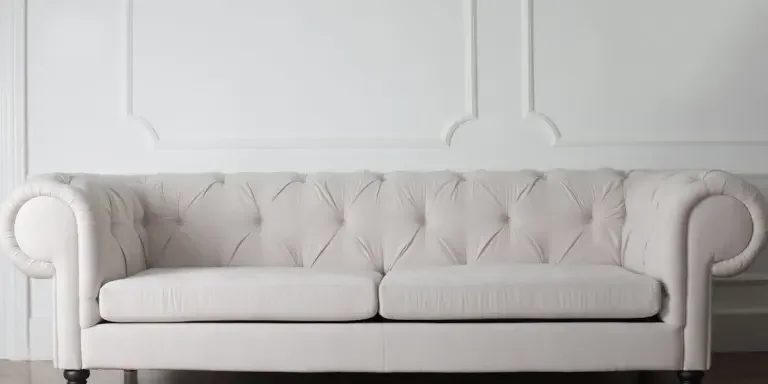Throughout history, upholstery fabrics, especially those like silk and velvet, have been a marker of social status. Today, they still play a vital role in interior design, creating opportunities for more personalized and luxurious home décor.
In 2025, customers seek comfortable, durable, and stylish upholstery fabrics to furnish homes, offices, or commercial spaces. However, you must first understand what makes each fabric unique, as well as your target market’s specific needs and lifestyle, to best stand a chance of choosing varieties consumers will love – read on to discover which styles are most likely to do just that.
Table of Contents
Global demand for upholstery fabric
Factors to consider when choosing upholstery fabrics
9 top upholstery fabrics for furniture in 2025
Conclusion
Global demand for upholstery fabric
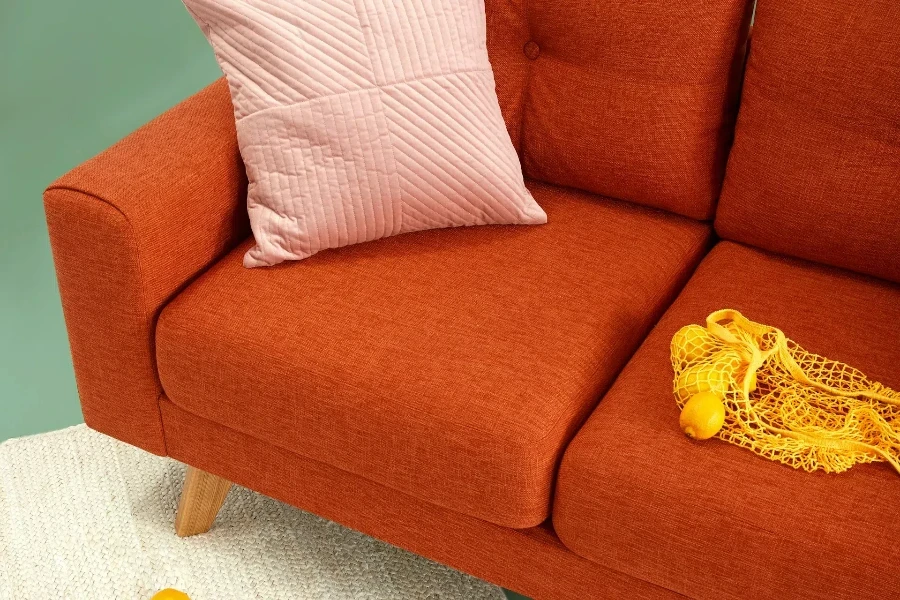
The upholstery fabric market was estimated to be worth USD 44.5 billion in 2023 and is projected to grow at a CAGR of 6.4%. As users become more conscious about the look and feel of their furniture, businesses must adapt by choosing visually appealing and functional fabrics. Factors influencing the growth of this market include:
Increased demand for home décor
The more people spend time at home, the more they’re likely to want to create a cozy atmosphere through an enhanced appearance. As renovations become more common, more homeowners are on the look out for trendy home décor products.
Growth of hospitality and commercial sectors
The growth of commercial spaces such as restaurants, lounges, and offices is also driving the demand for easy-to-maintain, durable upholstery fabric. Polyester, for example, is used in high-traffic spaces in the United States and other countries because of its durability and ease of maintenance.
Sustainability
As sustainability concerns grow, customers seek eco-friendly fabrics for their furniture, with linen and wool blends being some of the most popular natural fabrics among adherents of this trend.
Factors to consider when choosing upholstery fabrics
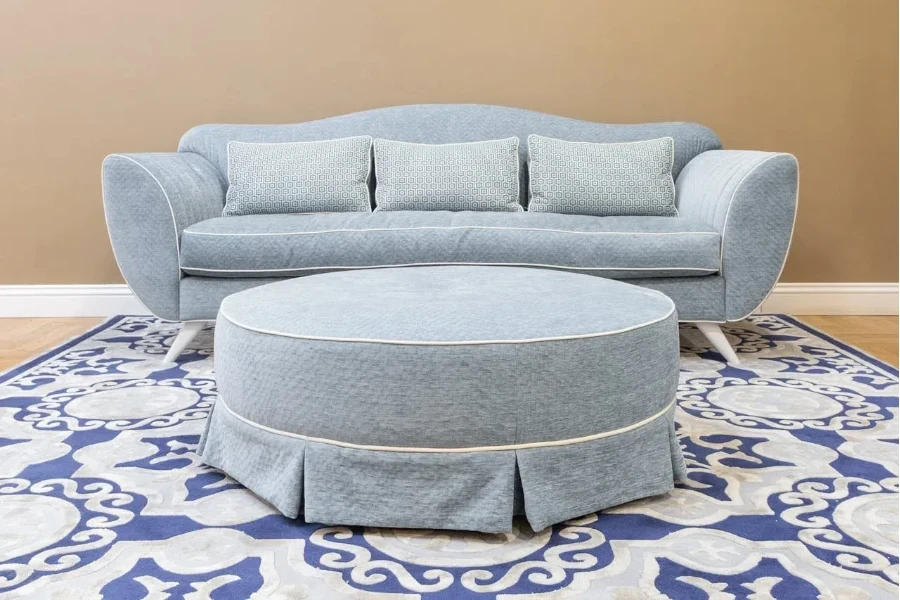
Durability
A material’s ability to resist wear and tear is what most likely determines its longevity, and therefore makes for good selling points in commercial spaces. For example, polyester and leather are quality materials that are highly durable and great for high-traffic areas.
Maintenance and cleaning
Customers who manage children and pets or have busy lifestyles appreciate convenience. To meet the needs of these customers, stock up on velvet and polyester, which can be cleaned easily and maintained using common household cleaning tools.
Fabric’s resistance to weather conditions
Consider weather-resistant upholstery for outdoor use or near windows. For example, offering UV-resistant fabric like polyester helps to attract customers looking to furnish sunrooms or bright, airy outdoor living spaces.
Health and environmental factors
Eco-friendly upholstery fabrics promote healthy environments and support customers’ demand for sustainable options. Add organic cotton and linen to your store collection to provide users with natural fibers free from harmful chemicals.
Color and style
Choose colors and styles that complement a wide range of home décor themes. Neutral tones are versatile, easily matching the aesthetic appeal of several interior styles. Bold colors and patterns, meanwhile, double as decorative items that make indoor living spaces visually appealing.
Texture and comfort
Due to comfort being a priority when it comes to seating furniture textiles, texture exudes a significant influence on a customer’s buying decision. Velvet and chenille offer a luxurious, plush feel that fits right in for creating a high-end vibe, while soft and durable textures are perfect for meeting the needs of family-oriented spaces.
10 top upholstery fabrics for furniture in 2025
Velvet
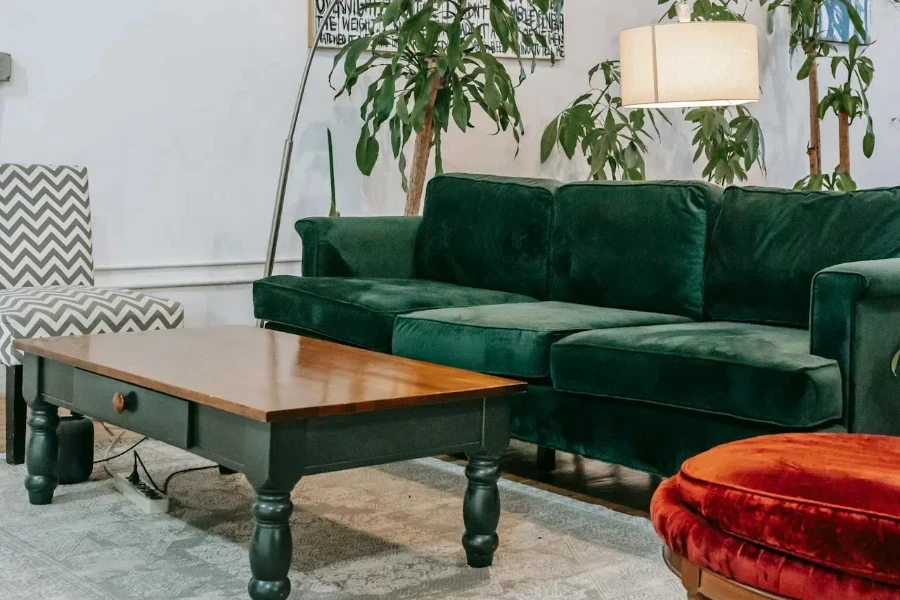
Velvet is known for its soft, quality plush texture and rich colors that create an elegant visual appeal. They can be used as upholstery fabrics in accent chairs and sofas. Although heavy, it’s especially soft on the skin, making velvet ideal for ottomans, cushion covers, pillows, stools, and sofas in cozy lounges and libraries.
Polyester
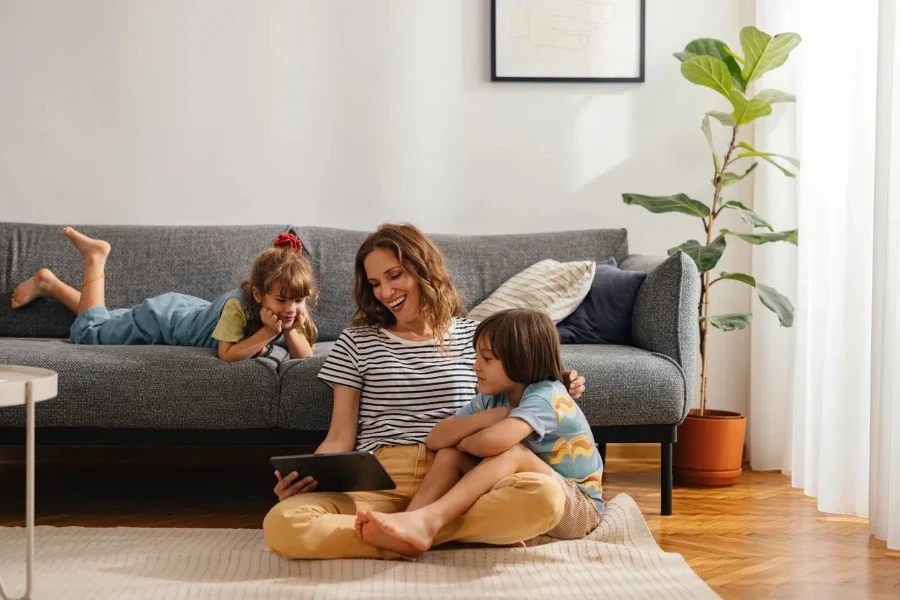
Customers love polyester because of its durability and resistance to wrinkles. In addition to its strength, it is affordable and highly resistant to wear and tear. Polyester therefore works best on furniture for high-traffic areas, commercial spaces, dining room chairs, and homes with kids or pets.
Silk
Silk is a luxurious fabric mostly found in high-end and formal settings due to its delicate nature, with interior designers choosing it to add a sophisticated, lustrous finish. It’s also great for complementing decorative chairs, accent pieces, or cushions.
Jacquard
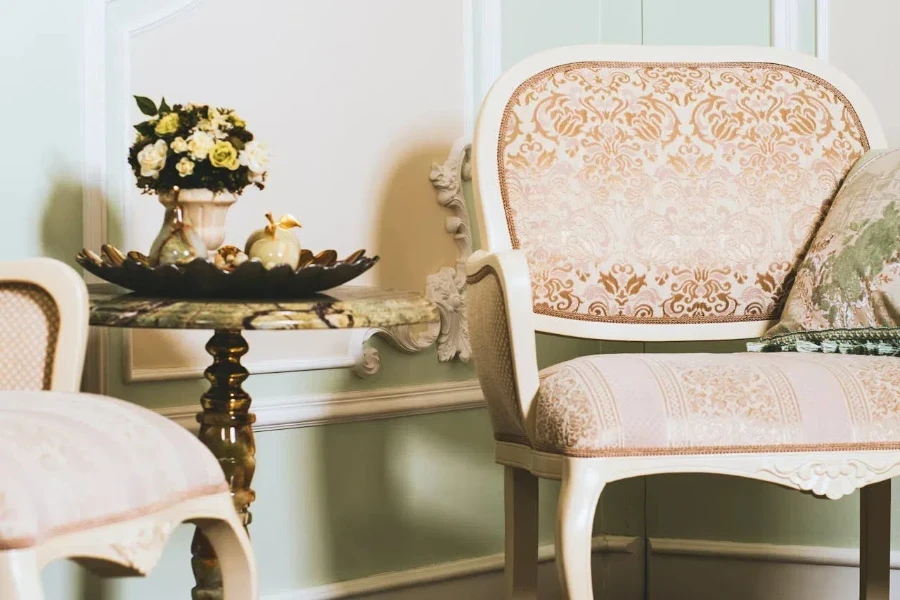
Jacquard, unlike printed fabrics, is made of a pattern woven directly into the fabric using special tools, giving it a durable, high-quality texture. The intricate weave makes jacquard and chenille jacquard perfect for vintage armchairs, pillows, sofas, or decorative tables.
Chenille
Although it can be quite heavy, the unique velvety finish of chenille helps to make sofas and chairs extra comfortable as well as visually appealing. Seating covered with durable chenille fabrics or piece-dyed chenille jacquard is perfect for cozy cafes, waiting areas, and lounges.
Leather
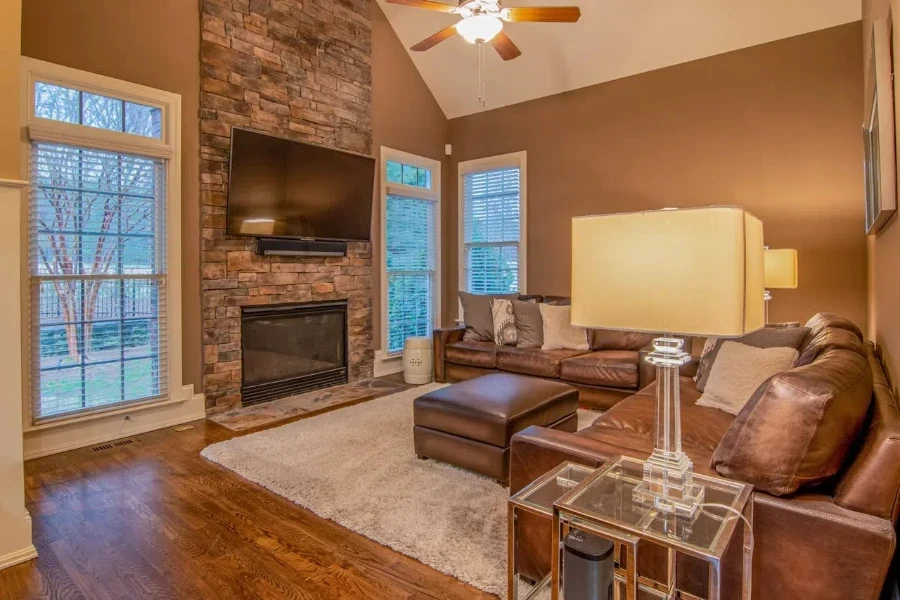
Leather, one of the most durable and elegant upholstery materials, has stood the test of time for its ability to add a feeling of exclusivity to chairs, tables, and ottomans. In addition to its durability, leather is resistant to stains and easy to clean, making it a smart investment for homes, offices, and businesses that want to create a premium feel.
Faux leather
Those who want the look of leather but not the high price point can choose faux leather instead. Made from synthetic fabric, it is more affordable than its animal-made counterpart while retaining its water resistance and clean look leather, working perfectly for office, dining, and reception chairs.
Cotton
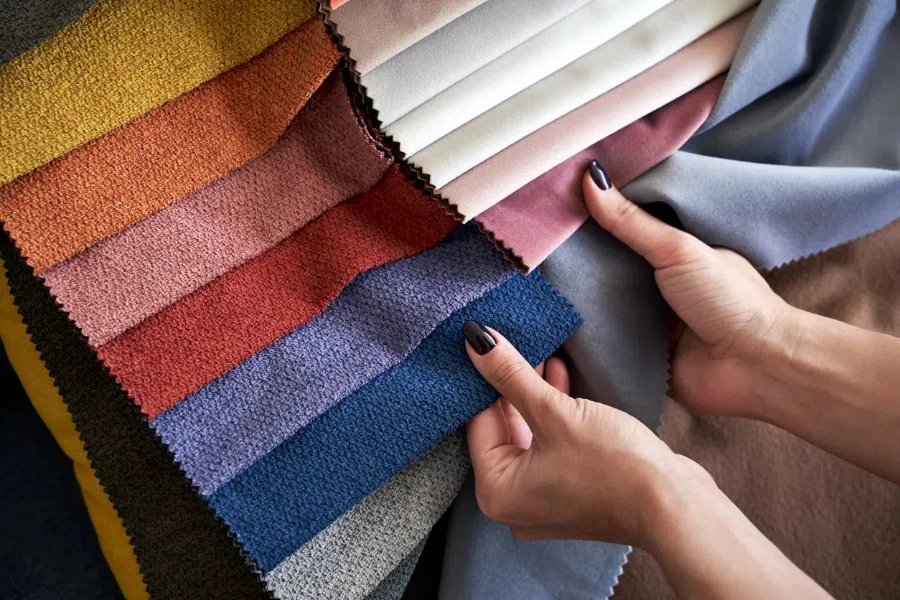
Cotton is often chosen for a furniture covering because of its versatility, affordability, and hypoallergenic properties. It is excellent for customizing drapes, beds, and chairs or for reinventing existing items.
Linen
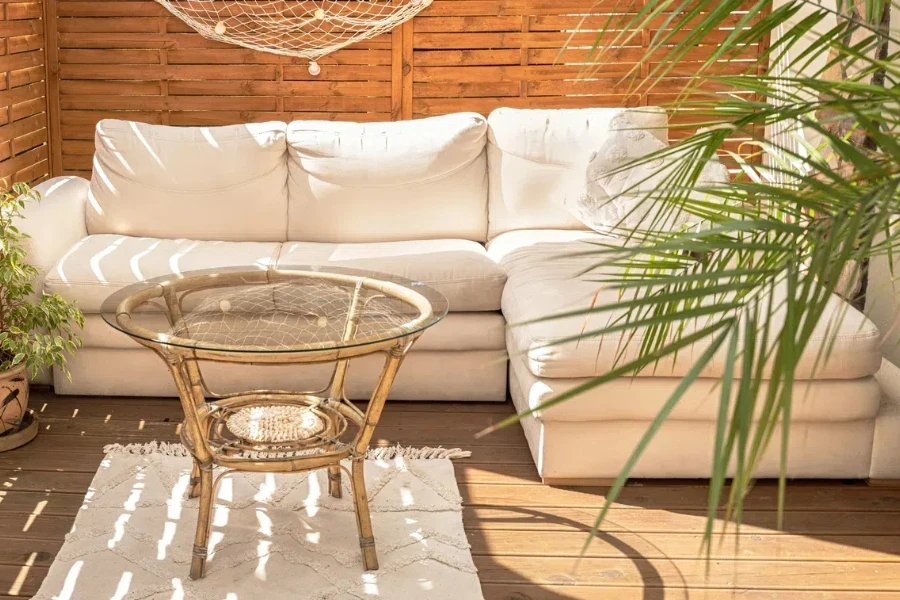
Linen is a breathable upholstery fabric with an airy, natural look. Its lightweight and durable threads make it allergy-free and perfect for homes where health and comfort are top priority.
It is common to see linen and cotton upholstery in warm regions because of its airy look. Linen can be used for cushion covers and chairs in beach houses and homes with a relaxed, natural décor theme.
Wool
Wool is a soft material that is extra durable when blended with other synthetic fibers. Its stretchiness makes it the perfect material for slipcovers in living rooms and bedrooms, while in colder regions, wool is used as an upholstery fabric to boost warmth and comfort.
Conclusion
By stocking a range of upholstery fabrics, you’re providing your customers the ability to transform any setting or piece of furniture into statement items. Comfort, durability, and maintenance are the major factors designers look for when selecting furniture. Therefore, having a variety of fabrics in your collection will help you cater to customers with a variety of preferences.
